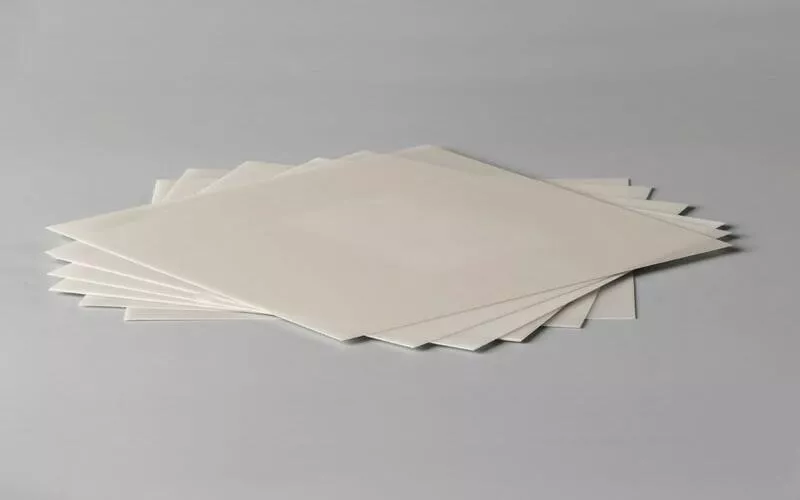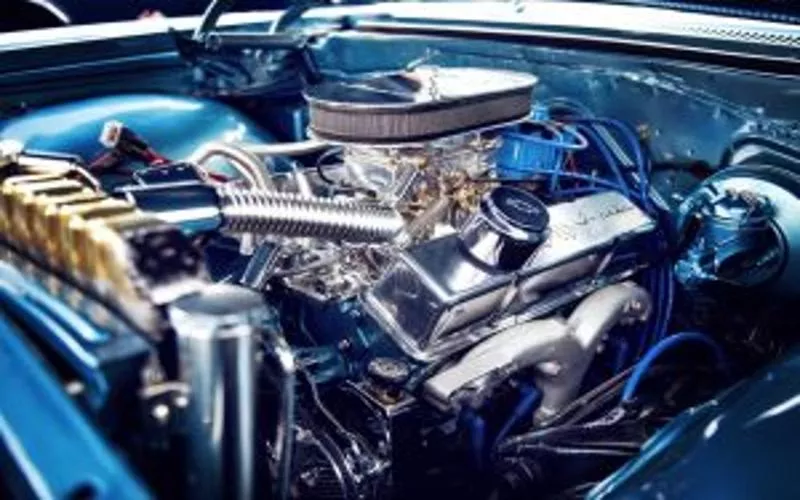Reliability, durability, and heat resistance are all non-negotiable needs in the automobile industry.
They are needed to ensure that automobile products are qualitative.
This is where alumina substrates come in, their unique qualities provide automobiles with the components they need to function effectively.
How?
Let’s check it out together.
What Are Alumina Substrates?

Alumina substrate is a typical ceramic material that is made from aluminum oxide (Al₂O₃).
It is widely employed in producing several automobile electronic components due to its remarkable thermal and electrical qualities.
Alumina ceramic substrates are remarkable for it’s impressive resistance qualities to heat, corrosion, and even mechanical stress.
These remarkable qualities are what make them a preferred material for high-demand applications like vehicles.
When it comes to the automobile, alumina substrates are mostly employed for applications like battery systems and power inverters.
The fact that they can perform well even when exposed to extreme temperatures makes them preferred over other materials.
And even more preferred than other advanced ceramic materials in some cases.
Among other alumina substrates’ properties, their ability to easily dissipate heat also makes them stand out.
So, manufacturers tend to be very particular about this and the thickness when choosing them for automobile applications.
Thicker alumina ceramic substrates also ensure durability, and the thinner ones can provide more flexibility for compact designs.
But durability isn’t as certain as for the thicker ones.
Another important factor you might see many people consider when choosing it is the alumina substrate price.
Let’s not jump right.
But ultimately, you should know that alumina substrates are an indispensable material in the automobile industry today.
What Are The Properties Of Alumina Ceramics That Make It Ideal For Use In The Automobile Industry?

When compared to other advanced ceramic materials, alumina substrate has several unique properties that make it stand out.
These remarkable alumina substrate properties make it a preferred material for various uses in the automobile industry.
And more importantly, they justify the alumina substrate price that may seem to be a little over other materials.
Let’s take a cursory glance at these unique alumina ceramic substrates:
-
Impressive Thermal Conductivity
The impressive thermal conductivity feature of alumina ceramic substrates is one of the first qualities we’ll be discussing.
What this feature does is that it enables alumina ceramic substrate to dissipate heat easily from sensitive electrical parts.
This is very important in preventing overheating.
In other components like inverters and power modules, it helps to facilitate system stability and effectiveness.
-
Durability and Excellent Strength
The unique structural makeup of alumina ceramic substrate makes it retain its integrity when exposed to pressure and stress.
Pressure, stress, and other harsh conditions are common use cases in the automobile industry.
Alumina substrate works perfectly under these conditions.
The durability of alumina ceramic substrates also enhances the overall durability of the automobile application where it’s been used.
-
Resistance To Corrosion And Chemicals
Another impressive alumina substrate property is that it has a high resistance to oils, chemicals, and even moisture.
These are very common things to see in the automobile industry.
Alumina substrate ensures that automobile components stay functional even when exposed to these things.
-
Stable Performance At Varying Temperatures
Alumina ceramic substrates can perform well when they’re exposed to harsh temperatures.
They maintain their effectiveness even when exposed to extreme heat, freezing environments, or any other similar harsh environments.
-
Variety In Thickness Options
The rare variety in alumina substrate thickness means that producers in the automobile industry choose the type that best suits their intended use.
Let’s give a very simple example.
Substrates that are thinner in nature are best just for a compact electronic module.
Similarly, the thicker ones give enhanced mechanical support.
These alumina substrate properties strongly determine the strength, durability, and general reliability of the material it is applied.
What Are The Benefits Of Using Alumina Substrates In The Automobile Industry?

Durability, reliability, and performance are just a few of the important needs in automobile products.
They’re non-negotiable for every automobile product, irrespective of the module or variants.
Alumina substrates offer all these important needs and many other practical benefits.
How?
Don’t worry, let’s take a look at some of them together:
-
Excellent Heat Management
Alumina substrate has this unique ability to effectively conduct heat.
This makes high-end automobile products like power transistors and even voice regulators dissipate easily and quickly.
And so doing, the components function extremely well without breaking down even when exposed to pressure
All these are made possible due to the impressive thermal conductivity of alumina ceramic substrates.
So when you see an alumina substrate price that seems to be a little higher than others.
You might want to think about the higher benefits it offers as compared to other materials.
Flexibilty
As earlier stated, alumina substrate thickness can be customized to the needed shapes and sizes.
This makes it very easy to create compact automobile modules without sacrificing efficiency.
For instance, thinner alumina is employed in tight places like slim battery packs, etc.
This offers flexibility and a general usage advantage without restricting its usability to just a few scenarios.
-
Enhanced Safety
Alumina substrate also stands out for its excellent electrical insulation property.
This is also an indispensable feature as it helps to prevent short circuits and also protects delicate components.
This feature makes alumina ideal for use in components like ignition systems and many more.
-
Durability And Resistance
Most products in the automobile industry are used in very harsh and tough conditions.
They’re constantly exposed to oil, moisture, and even chemicals.
Just like other advanced ceramic materials, alumina substrates have a high resistance to corrosion.
This feature helps the automobile products to maintain their effectiveness even as they’re constantly exposed to harsh environments.
-
Cost-Effective Over Time
Just like other advanced ceramic materials, the alumina substrate price may be a bit higher compared to other alternative materials for usage.
However, the long-lasting values and features it offers outweigh the original financial investment.
It has an impressively low failure rate and is very reliable.
These alone prevent the need for constant replacement and maintenance, thus proving to be cost-effective over time.
What Are The Various Applications Of Alumina Substrates In The Automobile Industry?

Reliable, durable, and high-performing materials are needed in the automobile industry.
This makes alumina substrates and similar advanced ceramic materials an essential tool in the automobile industry.
The remarkable alumina substrate properties enable these materials to function well and work as intended.
-
Engine Control Units (ECUs)
The engineer control unit, which is like the brain of a vehicle, is indeed powered by alumina substrates.
Alumina acts as the foundation for the electronic circuits therein.
The remarkable alumina substrate properties, earlier discussed, enable those units to function effectively even when they are exposed to harsh environments.
The employment of advanced ceramic materials like alumina here enhances durability and functionality.
-
Power Electronics And Inverters
The recent increase in the production of electric vehicles further makes alumina substrates a critical component in the automobile industry.
When the right alumina thickness is used, the manufacturers can then effectively manage the heat generated during the energy conversion processes.
This helps to maintain high performance and effectiveness over time.
-
LED Lighting Systems
Alumina ceramic substrates’ ability to handle high power densities makes them highly used for LED headlights as well.
When the wrong alumina properties aren’t used, LED units can overheat and ultimately fail.
Advanced ceramic materials like alumina make sure that lighting systems remain durable and functional.
-
Sensors And Control Modules.
Alumina ceramic substrates are also employed in automobile sensors for tire pressing, environmental sensing, and similar applications.
This enables them to provide a safe environment for the fragile electronics.
The excellent alumina properties keep the sensor accurate in responsiveness and accuracy in challenging drilling situations.
-
Ignition Systems
Alumina substrates are employed in making effective ignition models that are capable of enduring high voltages.
Alumina substrate enables able to withstand the thermal and mechanical stress typical of vehicle operations.
This helps to fuel the efficiency of the battery.
In Conclusion

When it comes to making automobiles safe and reliable, alumina substrates are an indispensable material.
Their unique qualities and durability make them the best choice for your next automobile projects.
And if you’re in search of qualitative alumina substrate, visit ggsceramics to order the alumina substrates that your products deserve.